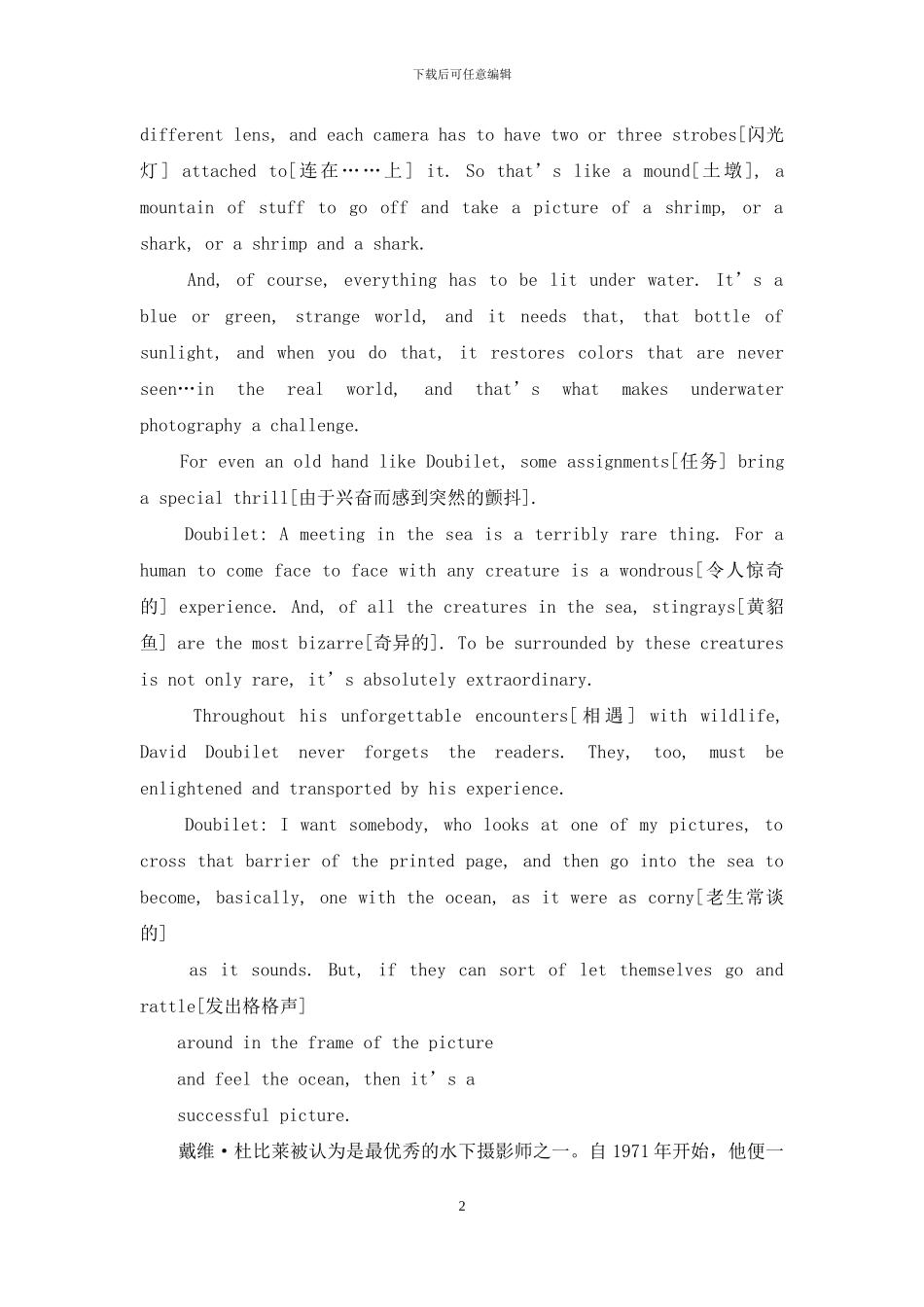下载后可任意编辑水下摄影:探究深海神秘水下摄影:探究深海神秘 Considered one of the best underwater photo- graphers, David Doubilet has been taking spectacular photographs for National Geographic since 1971. Doubilet: I never…never go in the water without a camera. I can barely take a bath without a camera. I might miss something. I figure I’ve been underwater now…a hundred days a year since I’ve been 12, for three hours a day. I don’t know what that adds up to but it’s a lot of time. Underwater is half shooting pictures and thinking about pictures, and the other half is hunting, finding the stuff. It’s a little bit like trailcraft[对大自然痕迹的讨论], walking through the woods – what’s that, what’s that sound, what’s that thing, why are these fish doing that? And after a while you begin to learn how the sea works, and it’s a very complex, very little understood place, and you’ve gotta find things. Underwater photography, like anything else under water, requires special training and sophisticated[ 采 纳 先 进 技 术 的 ] equipment. Doubilet: Photography is about seeing, and to see pictures you need to have equipment, and the equipment not only has got to work but it’s got to be different and new. It provides you with a new look, a new way of looking at something. And underwater, you can’t change film, you can’t change lenses[镜头], you have to have a pile of stuff. To shoot six rolls I have to have six cameras, and each one of them has to have a 1下载后可任意编辑different lens, and each camera has to have two or three strobes[闪光灯] attached to[连在……上] it. So that’s like a mound[土墩], a mountain of stuff to go off and take a picture of a shrimp, or a shark, or ...


